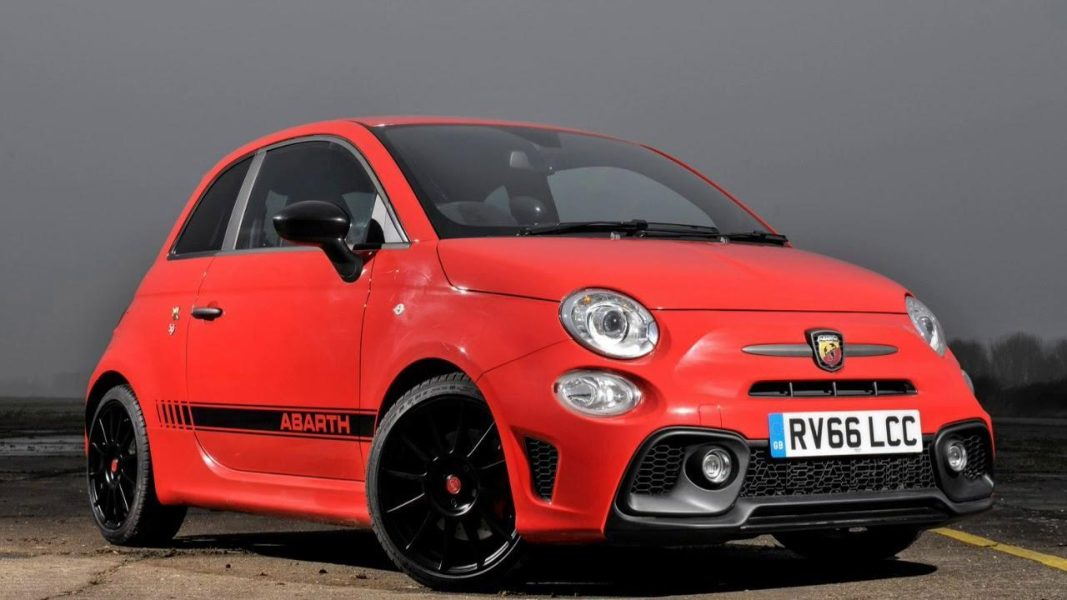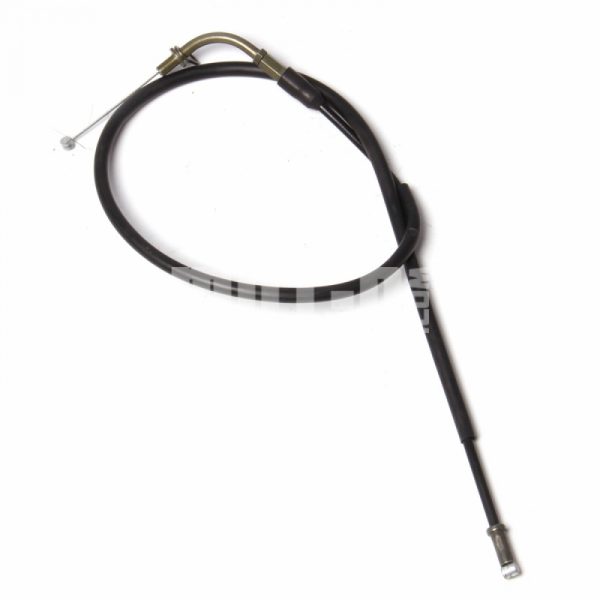
Abarth 595 2018 overview
Content
- Is there anything interesting about its design? 7/10
- How practical is the interior space? 4/10
- Does it represent good value for money? What functions does it have? 4/10
- What are the main characteristics of the engine and transmission? 7/10
- How much fuel does it consume? 7/10
- What is it like to drive? 5/10
- What safety equipment is installed? What is the safety rating? 5/10
- How much does it cost to own? What kind of guarantee is provided? 7/10
- Verdict
- Could you ignore the shortcomings of the Abarth 595? Let us know in the comments below.
Since 1949, Abarth has given the venerable Italian Fiat marque a touch of performance based largely on the exploits of giant killers in small modified cars like the 600s Fiat 1960.
More recently, the brand has been revived to increase the fortune of the smallest Fiat sold in Australia. Officially known as the Abarth 595, the tiny hatchback hides a little surprise under its distinctive nose.
| Abarth 595 2018: (base) | |
|---|---|
| Safety Rating | |
| engine's type | 1.4 L turbo |
| fuel type | Regular unleaded gasoline |
| Fuel efficiency | 5.8l / 100km |
| Landing | 4 Places |
| Price from | $16,800 |
Is there anything interesting about its design? 7/10
Despite being based on designs that are ten years old, the Abarths still stand out. Based on the classic Fiat 500 shape of the 1950s and 60s, it's more cute than cutthroat, with a narrow gauge and high roof giving it a toy-like look.
Abarth is trying to up the ante with deep front and rear bumper splitters, fast driving stripes, new headlights and multi-coloured side mirrors.
Abarth has stripes for fast driving and side mirrors in different colors.
The 595 is equipped with 16-inch wheels, while the Competizione is equipped with 17-inch wheels.
Inside, it definitely differs from most conventional cars with color-coded plastic panels on the dash and a very upright seating position, as well as a two-tone steering wheel.
It's a "love it or hate it" type of sentence. There is no middle ground here.
How practical is the interior space? 4/10
This is another area where Abarth falls down. First of all, the driver's seat in both cars is completely compromised.
The seat itself is set far, far away, too high and has little adjustment in any direction, and there is no reach adjustment in the steering column to allow a taller (or even average height) rider to get comfortable.
The pricier Competizione we tested was fitted with optional sport bucket seats from racing company Sabelt, but even those are literally 10 cm taller. They are also very durable and while they look supportive, they lack decent lateral support.
Optional sports bucket seats are installed 10 cm higher.
The tiny media screen is comfortable to use, but the buttons are tiny and there's no storage space on the front.
There are two cup holders under the center console and two more between the front seats for rear seat passengers. There are no bottle holders or storage space for rear passengers in the doors.
Speaking of the rear seats, they're cramped on their own, with little headroom for average-sized adults and precious little knee or toe room. However, there are two sets of ISOFIX child seat attachment points if you want to fight your squirming toddlers through a tight opening.
There are two cupholders under the center console.
The seats recline forward to reveal more cargo space (185 liters with the seats up and 550 liters with the seats down), but the seat backs don't fold down to the floor. There is a can of sealant and a pump under the boot floor, but there is no spare tire to save space.
To tell you the truth, it was a long day testing this car... At 187 cm tall, I just couldn't fit into it.
Does it represent good value for money? What functions does it have? 4/10
The range has been reduced to two cars and the cost has dropped slightly, with the 595 now starting at $26,990 plus travel expenses.
New multimedia system with 5.0-inch touchscreen (with digital radio), leather-wrapped steering wheel, TFT instrument cluster display, rear parking sensors, alloy pedals, 16-inch alloy wheels and adaptive dampers (front only) are standard . 595.
New to the Abarth is a multimedia system with a 5.0-inch touch screen.
A convertible, or more specifically, a rag-top (convertible) version of the 595 is also available for $29,990.
The 595 Competizione is now $8010 cheaper at $31,990 with a manual transmission, leather seats (Sabelt-brand sports buckets are optional), 17-inch alloy wheels, a louder Monza exhaust, and Koni and Eibach adaptive dampers front and rear . springs.
The 595 Competizione comes with 17-inch alloy wheels.
Unfortunately, what stands out the most on Abarths is what they don't come with. Automatic lights and wipers, any cruise control, driver assistance including AEB and adaptive cruise… not even a rearview camera.
What's more puzzling is that the Abarth's architecture, although a decade old, has the ability to accept at least a rearview camera.
Abarth's explanation that the domestic car market does not consider these inclusions important also does not stand up to scrutiny.
In terms of value, the lack of core content sends Abarth to the bottom of the competitive stack, which includes both the Ford Fiesta ST and the Volkswagen Polo GTI.
What are the main characteristics of the engine and transmission? 7/10
A pair of Abarth 595s use the same 1.4-liter four-cylinder MultiJet turbo engine with varying degrees of tuning. The base car delivers 107kW/206Nm and the Competizione 132kW/250Nm thanks to a freer exhaust, a larger Garrett turbocharger and an ECU reconfiguration.
The base car accelerates to 0 km/h in 100 seconds, while the Competizione is 7.8 seconds faster; the optional "Dualogic" automatic transmission is 1.2 seconds slower in both cars.
The 1.4-litre turbo engine has two different settings: 107kW/206Nm and 132kW/250Nm in Competizione trim.
A five-speed manual transmission is standard and neither car is equipped with a limited slip differential.
How much fuel does it consume? 7/10
Over 150 km of testing, the Competizione consumed 8.7 liters per 100 km, indicated on the dashboard, with a claimed combined fuel economy of 6.0 l / 100 km. Our brief test of the 595 showed a similar score compared to the same claimed score.
The Abarth only accepts 95 octane or better fuel, and its small 35-litre tank is enough for a theoretical 583km range between fill-ups.
What is it like to drive? 5/10
Ergonomics aside, the combination of a punchy engine and a light car is always good, and the turbocharged 1.4-liter four-cylinder engine pairs well with the front-wheel-drive Abarth.
There's always enough mid-range traction to give the Abarth a boost, and the longer-legged five-speed gearbox pairs well with the engine.
It also holds the road and turns surprisingly well, despite the Sport button adding too much artificial weight to the Abarth's handlebar feel.
The same button also stiffens the front shocks on the 595 and all four on the Competizione, which works well on flatter terrain but makes it too stiff on wavy surfaces.
The Abarth 595 also handles and turns surprisingly well.
In the city it can be difficult to find a balance between ride and comfort. The difference between softness and hardness is much more noticeable in the Competizione, but it's still tiring if you're driving over bumps.
Incidentally, the turning radius is ridiculously large for such a small car, making turns - already compromised by the lower front bumper - unnecessarily fraught.
The Monza exhaust on the Competizione gives it a little more presence, but it could easily get louder (or at least more crackling) again; after all, you're not buying this car to be quiet.
The Monza exhaust on the Competizione gives the car more presence.
Warranty and safety rating
Basic Warranty
3 years / 150,000 km
guarantee
ANCAP Safety Rating
What safety equipment is installed? What is the safety rating? 5/10
Despite the lack of electronic safety features and, somewhat surprisingly in this day and age, a rear view camera, the Fiat 500 that forms the backbone of the Abarth still holds the maximum five-star rating from the ANCAP it received in 2008 thanks to its seven airbags and body strength. .
However, he would be out of luck if he was tried under the new ANCAP rules coming into effect in 2018.
How much does it cost to own? What kind of guarantee is provided? 7/10
A three-year or 150,000 km standard warranty is offered on the Abarth 595 range with a recommended service interval of 12 months or 15,000 km.
Importer Abarth Fiat Chrysler Automobiles Australia is offering three fixed price services for the 595 model with mileage of 15,000, 30,000, 45,000, 275.06 and 721.03, 275.06 km, with the first one costing $XNUMX, the second one costing $XNUMX and the third one costing $XNUMX.
Verdict
It's hard to be kind to the Abarth 595. Based on a platform that's over a decade old, the car has outperformed its competitors in many ways, including basic ergonomics and value for money.
The larger engine works well in this smaller package, and its roadholding ability belies its size. However, only die-hard Abarth fans will be able to put up with the uncomfortable seating position and the complete absence of even the most formal features that a $10,000 less car can offer.
Could you ignore the shortcomings of the Abarth 595? Let us know in the comments below.

